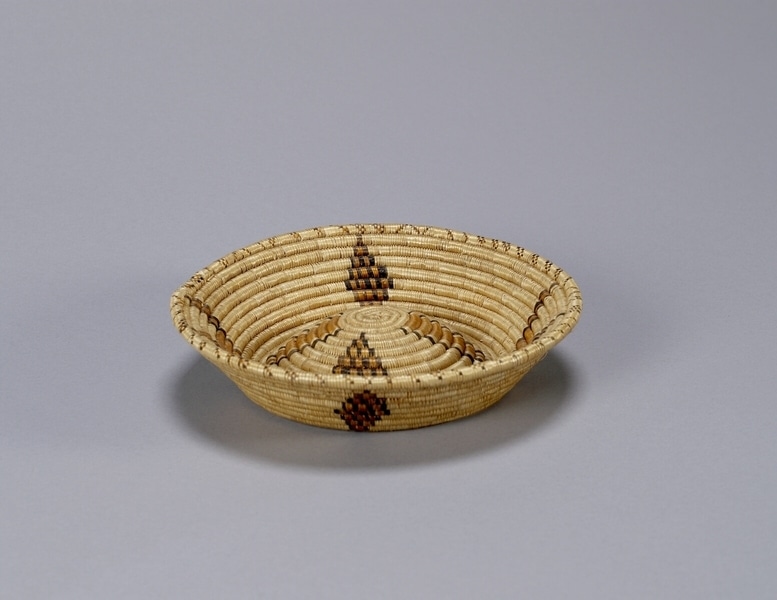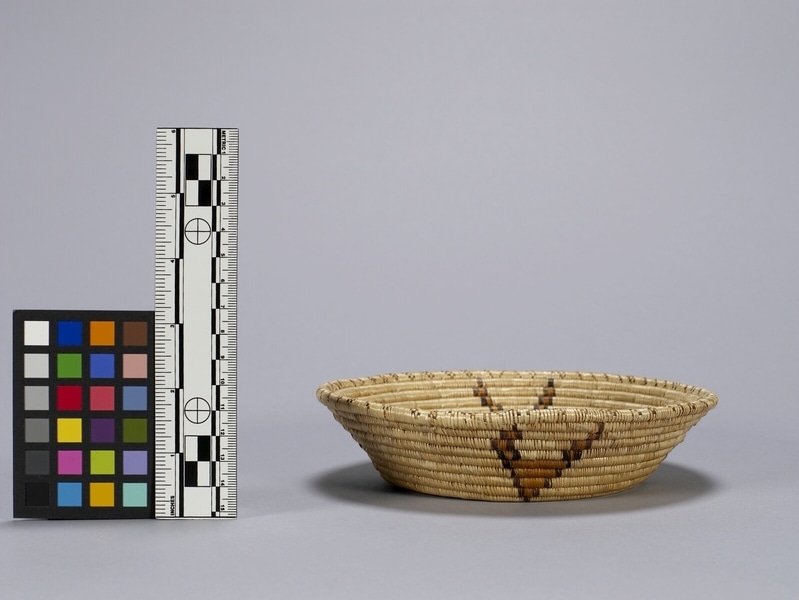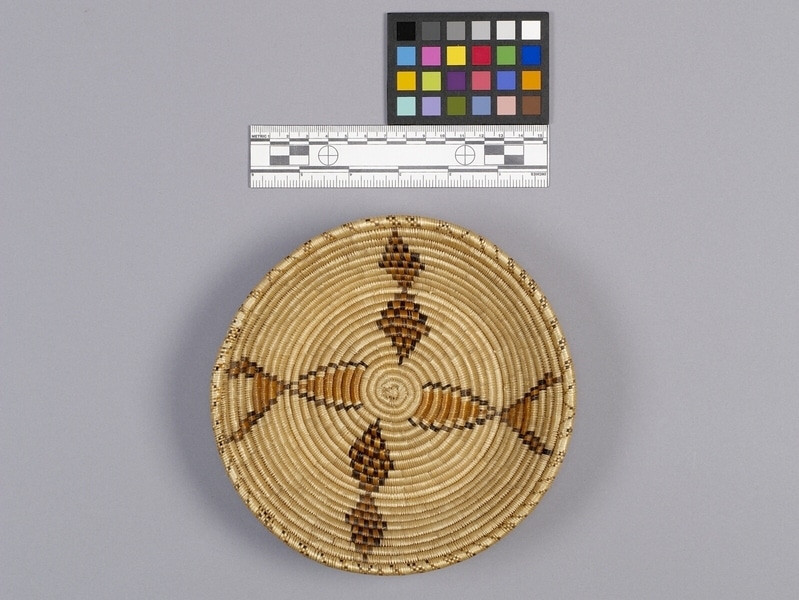Basket Item Number: K4.97 from the MOA: University of British Columbia



Description
A coiled circular basket with sides that flare upward and a bottom that inverts inward at the centre, creating a high dished bottom. The main design consists of four equally spaced geometric shapes along the sides and the bottom on a natural coloured background. One pair of geometric shapes are back-to-back orange and dark brown checkered diamond shapes. The other pair of geometric shapes are orange fish-like shapes outlined with dark brown. Each geometric shape pair is opposite one another. The rim has a pattern of orange and dark brown diagonal lines on a natural coloured background.
History Of Use
Flat tray-like baskets (ongalo) are used for winnowing maize, as well as serving food. Grass weaving is done by both men and women, but baskets are traditionally woven by most women.
Specific Techniques
Dyes used in this basket are yellow and black. Yellow dye is made from roots of wild rhubarb (ocilunguluila). The roots are pounded and placed in cold water with the grasses used to create the coils. Afterwards, the mixture is placed in a fire to boil for half an hour, turning the grasses amber-yellow. Black dye is made when the leaves of evava are mixed in a solution of iron obtained from stagnant muddy pools. Grasses are placed into the evava-iron solution and boiled to darken. It can be darkened further by boiling the solution again with the addition of pounded ungalo leaves.
Item History
- Made in Angola
- Collected during 1950
- Owned by Anne E. Copithorne before November 14, 1973
- Received from Anne E. Copithorne (Donor) on November 14, 1973
What
Who
- Culture
- Ovimbundu
- Previous Owner
- Anne E. Copithorne
- Received from
- Anne E. Copithorne (Donor)
Where
- Holding Institution
- MOA: University of British Columbia
- Made in
- Angola
When
- Collection Date
- during 1950
- Ownership Date
- before November 14, 1973
- Acquisition Date
- on November 14, 1973
Other
- Item Classes
- basketry
- Condition
- good
- Current Location
- Case 100
- Accession Number
- 0251/0107